9 Octobre 2025
Scientists from the International Agency for Research on Cancer (IARC) and Imperial College London, United Kingdom, propose a novel perspective to examine inefficiencies of health systems by…
9 Octobre 2025
Scientists from the International Agency for Research on Cancer (IARC) and Imperial College London, United Kingdom, propose a novel perspective to examine inefficiencies of health systems by…
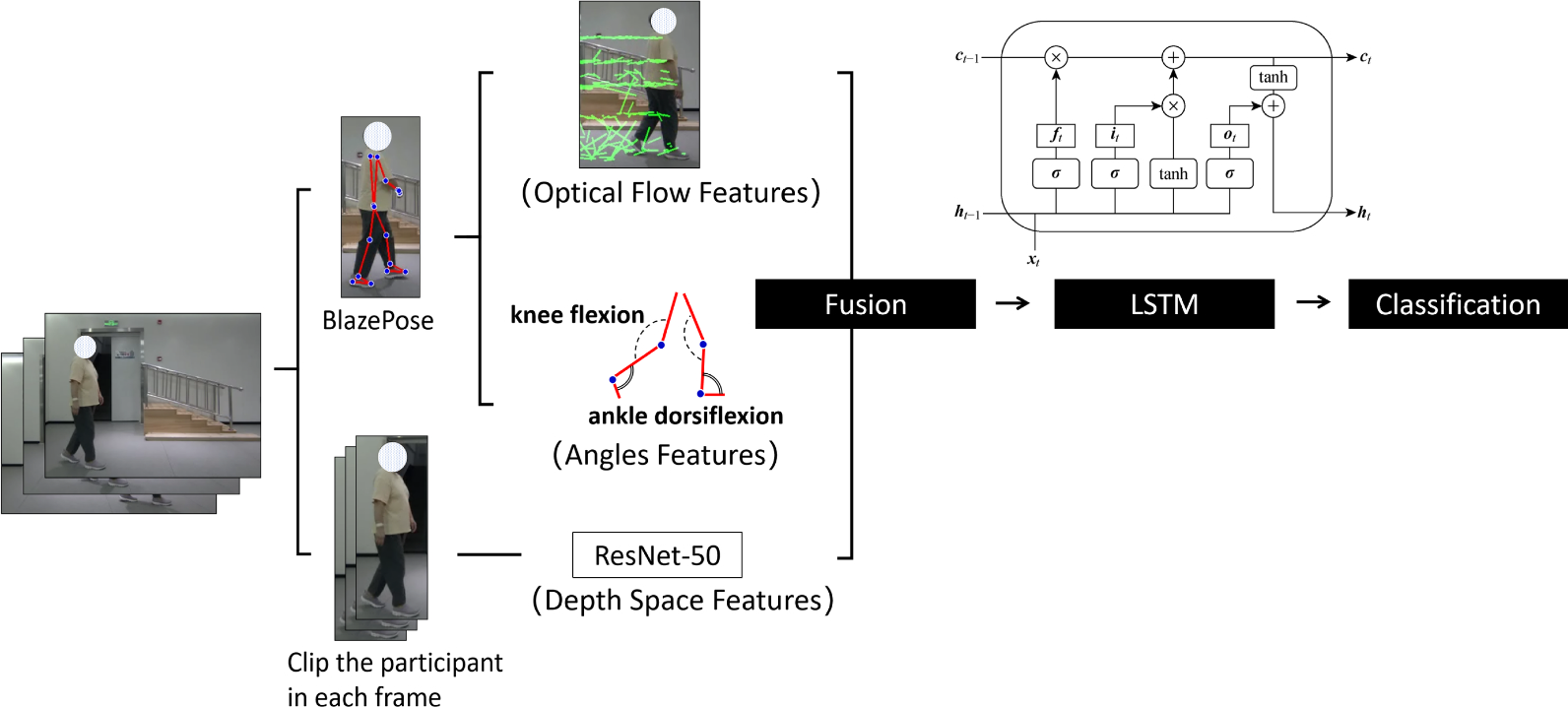
Benjamin EJ, Virani SS, Callaway CW, Chamberlain AM, Chang AR, Cheng S, Chiuve SE, Cushman M, Delling FN, Deo R, et al. Heart disease and stroke statistics-2018 update: a report from the american heart association. Circulation. 2018;137(12):67–492.
Google Scholar
Levy DE, Van Uitert RL. Delayed postischemic hypoperfusion: a potentially damaging consequence of stroke. Neurology. 1979;29(9_part_1):1245–1245.
Pound P, Gompertz P, Ebrahim S. Illness in the context of older age: the case of stroke. Sociology of health & illness. 1998;20(4):489–506.
Google Scholar
Dobkin BH. Strategies for stroke rehabilitation. The Lancet Neurology. 2004;3(9):528–36.
Google Scholar
Topham LK, Khan W, Al-Jumeily D, Hussain A. Human body pose estimation for gait identification: A comprehensive survey of datasets and models. ACM Computing Surveys. 2022;55(6):1–42.
Google Scholar
Cao Z, Simon T, Wei S-E, Sheikh Y. Realtime multi-person 2d pose estimation using part affinity fields. In: Proceedings of the IEEE Conference on Computer Vision and Pattern Recognition, 2017;7291–7299.
Fang H-S, Li J, Tang H, Xu C, Zhu H, Xiu Y, Li Y-L, Lu C. Alphapose: Whole-body regional multi-person pose estimation and tracking in real-time. IEEE Transaction Pattern Analysis and Machine Intelligence. 2022;45(6):7157–73.
Google Scholar
Nadeem A, Jalal A, Kim K. Automatic human posture estimation for sport activity recognition with robust body parts detection and entropy markov model. Multimedia Tools and Applications. 2021;80:21465–98.
Google Scholar
Lee K, Lee I, Lee S. Propagating lstm: 3d pose estimation based on joint interdependency. In: Proceedings of the European Conference on Computer Vision (ECCV), 2018;119–135.
Topham LK, Khan W, Al-Jumeily D, Waraich A, Hussain AJ. Gait identification using limb joint movement and deep machine learning. IEEE Access. 2022;10:100113–27.
Google Scholar
Lonini L, Moon Y, Embry K, Cotton RJ, McKenzie K, Jenz S, Jayaraman A. Video-based pose estimation for gait analysis in stroke survivors during clinical assessments: a proof-of-concept study. Digital Biomarkers. 2022;6(1):9–18.
Google Scholar
Washabaugh EP, Shanmugam TA, Ranganathan R, Krishnan C. Comparing the accuracy of open-source pose estimation methods for measuring gait kinematics. Gait & posture. 2022;97:188–95.
Google Scholar
Shi L, Zhang Y, Cheng J, Lu H. Skeleton-based action recognition with directed graph neural networks. In: Proceedings of the IEEE/CVF Conference on Computer Vision and Pattern Recognition, 2019;7912–7921.
Lamontagne A, Fung J, McFadyen BJ, Faubert J. Modulation of walking speed by changing optic flow in persons with stroke. Journal of Neuro Engineering and Rehabilitation. 2007;4:1–8.
Google Scholar
De Keersmaecker E, Van Bladel A, Zaccardi S, Lefeber N, Rodriguez-Guerrero C, Kerckhofs E, Jansen B, Swinnen E. Virtual reality-enhanced walking in people post-stroke: effect of optic flow speed and level of immersion on the gait biomechanics. Journal of Neuro Engineering Rehabilitation. 2023;20(1):124.
Google Scholar
Ren J, Reyes N, Barczak A, Scogings C, Liu M. An investigation of skeleton-based optical flow-guided features for 3d action recognition using a multi-stream cnn model. In: 2018 IEEE 3rd International Conference on Image, Vision and Computing (ICIVC), 2018;199–203.
Alfarano A, Maiano L, Papa L, Amerini I. Estimating optical flow: A comprehensive review of the state of the art. Computer Vision and Image Understanding, 2024;104160.
Li J, Wang Q. Multi-modal bioelectrical signal fusion analysis based on different acquisition devices and scene settings: Overview, challenges, and novel orientation. Information Fusion. 2022;79:229–47.
Google Scholar
Ranjan R, Ahmedt-Aristizabal D, Armin MA, Kim J. Computer vision for clinical gait analysis: A gait abnormality video dataset. arXiv preprint arXiv:2407.04190 2024.
Li H-T, Han S-L, Pan M-C. Lower-limb motion classification for hemiparetic patients through imu and emg signal processing. In: 2016 International Conference on Biomedical Engineering (BME-HUST), 2016;113–118.
Celik Y, Stuart S, Woo WL, Sejdic E, Godfrey A. Multi-modal gait: A wearable, algorithm and data fusion approach for clinical and free-living assessment. Information Fusion. 2022;78:57–70.
Google Scholar
He K, Zhang X, Ren S, Sun J. Deep residual learning for image recognition. In: Proceedings of the IEEE Conference on Computer Vision and Pattern Recognition, 2016;770–778.
Shi X, Chen Z, Wang H, Yeung D-Y, Wong W-K, Woo W-c. Convolutional lstm network: A machine learning approach for precipitation nowcasting. Advances in neural information processing systems 2015;28.
Cotton RJ. Kinematic tracking of rehabilitation patients with markerless pose estimation fused with wearable inertial sensors. In: 2020 15th IEEE International Conference on Automatic Face and Gesture Recognition (FG 2020), 2020;508–514.
Bazarevsky V, Grishchenko I, Raveendran K, Zhu T, Zhang F, Grundmann M. Blazepose: On-device real-time body pose tracking. arXiv preprint arXiv:2006.10204 2020.
Sun D, Roth S, Black MJ. Secrets of optical flow estimation and their principles. In: 2010 IEEE Computer Society Conference on Computer Vision and Pattern Recognition, 2010;2432–2439.
Lucas BD, Kanade T. An iterative image registration technique with an application to stereo vision. In: IJCAI’81: 7th International Joint Conference on Artificial Intelligence, 1981;2:674–679.
Grimm F, Kraugmann J, Naros G, Gharabaghi A. Clinical validation of kinematic assessments of post-stroke upper limb movements with a multi-joint arm exoskeleton. Journal of Neuro Engineering and Rehabilitation. 2021;18(1):92.
Google Scholar
Huang X, Liao O, Jiang S, Li J, Ma X. Kinematic analysis in post-stroke patients with moderate to severe upper limb paresis and non-disabled controls. Clinical Biomechanics. 2024;113:106206.
Google Scholar
He K, Zhang X, Ren S, Sun J. Identity mappings in deep residual networks. In: Computer Vision–ECCV 2016: 14th European Conference, Amsterdam, The Netherlands, October 11–14, 2016, Proceedings, Part IV 14, 2016;630–645.
Rahman K, Shair E, Abdullah A, Lee T, Nazm N. Deep learning classification of gait disorders in neurodegenerative diseases among older adults using resnet-50. International Journal of Advanced Computer Science & Applications 2024;15(11).
Simonyan K, Zisserman A. Very deep convolutional networks for large-scale image recognition. arXiv preprint arXiv:1409.1556 2014.
Szegedy C, Liu W, Jia Y, Sermanet P, Reed S, Anguelov D, Erhan D, Vanhoucke V, Rabinovich A. Going deeper with convolutions. In: Proceedings of the IEEE Conference on Computer Vision and Pattern Recognition, 2015;1–9.
Ikechukwu AV, Murali S, Deepu R, Shivamurthy R. Resnet-50 vs vgg-19 vs training from scratch: A comparative analysis of the segmentation and classification of pneumonia from chest x-ray images. Global Transitions Proceedings. 2021;2(2):375–81.
Google Scholar
Vaswani A, Shazeer N, Parmar N, Uszkoreit J, Jones L, Gomez AN, Kaiser Ł, Polosukhin I. Attention is all you need. Advances in neural information processing systems 2017;30.
Hochreiter S, Schmidhuber J. Long short-term memory. Neural Computation. 1997;9(8):1735–80.
Google Scholar
Cicirelli G, Impedovo D, Dentamaro V, Marani R, Pirlo G, D’Orazio TR. Human gait analysis in neurodegenerative diseases: A review. IEEE Journal of Biomedical Health Informatics. 2021;26(1):229–42.
Google Scholar
Dosovitskiy A, Beyer L, Kolesnikov A, Weissenborn D, Zhai X, Unterthiner T, Dehghani M, Minderer M, Heigold G, Gelly S, et al. An image is worth 16×16 words: Transformers for image recognition at scale. arXiv preprint arXiv:2010.11929 2020.
Yang S, Zhang J-T, Novak AC, Brouwer B, Li Q. Estimation of spatio-temporal parameters for post-stroke hemiparetic gait using inertial sensors. Gait & posture. 2013;37(3):354–8.
Google Scholar
Scheffer C, Cloete T. Inertial motion capture in conjunction with an artificial neural network can differentiate the gait patterns of hemiparetic stroke patients compared with able-bodied counterparts. Computer Methods Biomechanics and Biomedical Engineering. 2012;15(3):285–94.
Google Scholar
Repnik E, Puh U, Goljar N, Munih M, Mihelj M. Using inertial measurement units and electromyography to quantify movement during action research arm test execution. Sensors. 2018;18(9):2767.
Google Scholar
Li Y, Zhang X, Gong Y, Cheng Y, Gao X, Chen X. Motor function evaluation of hemiplegic upper-extremities using data fusion from wearable inertial and surface emg sensors. Sensors. 2017;17(3):582.
Google Scholar
Hearst MA, Dumais ST, Osuna E, Platt J, Scholkopf B. Support vector machines. IEEE Intelligent Systems and their applications. 1998;13(4):18–28.
Google Scholar
Eichler N, Hel-Or H, Shimshoni I, Itah D, Gross B, Raz S. 3d motion capture system for assessing patient motion during fugl-meyer stroke rehabilitation testing. IET Comput Vision. 2018;12(7):963–75.
Google Scholar
Zhou C, Feng D, Chen S, Ban N, Pan J. Portable vision-based gait assessment for post-stroke rehabilitation using an attention-based lightweight cnn. Expert Systems with Application. 2024;238:122074.
Google Scholar
Palermo M, Lopes JM, André J, Matias AC, Cerqueira J, Santos CP. A multi-camera and multimodal dataset for posture and gait analysis. Scientific data. 2022;9(1):603.
Google Scholar
Mroz S, Baddour N, McGuirk C, Juneau P, Tu A, Cheung K, Lemaire E. Comparing the quality of human pose estimation with blazepose or openpose. In: 2021 4th International Conference on Bio-Engineering for Smart Technologies (BioSMART), 2021;1–4.
Jun K, Lee K, Lee S, Lee H, Kim MS. Hybrid deep neural network framework combining skeleton and gait features for pathological gait recognition. Bioengineering. 2023;10(10):1133.
Google Scholar
Khokhlova M, Migniot C, Morozov A, Sushkova O, Dipanda A. Normal and pathological gait classification lstm model. Artifical Intelligence in Medicine . 2019;94:54–66.
Google Scholar
Benson LC, Räisänen AM, Clermont CA, Ferber R. Is this the real life, or is this just laboratory? a scoping review of imu-based running gait analysis. Sensors. 2022;22(5):1722.
Google Scholar
Kim H, Kim Y-H, Kim S-J, Choi M-T. Pathological gait clustering in post-stroke patients using motion capture data. Gait & Posture. 2022;94:210–6.
Google Scholar
Mengüç Y, Park Y-L, Pei H, Vogt D, Aubin PM, Winchell E, Fluke L, Stirling L, Wood RJ, Walsh CJ. Wearable soft sensing suit for human gait measurement. The International Journal of Robotics Research. 2014;33(14):1748–64.
Google Scholar
Nakano N, Sakura T, Ueda K, Omura L, Kimura A, Iino Y, Fukashiro S, Yoshioka S. Evaluation of 3d markerless motion capture accuracy using openpose with multiple video cameras. Frontiers in sports and active living. 2020;2:50.
Google Scholar
Topham LK, Khan W, Al-Jumeily D, Waraich A, Hussain AJ. A diverse and multi-modal gait dataset of indoor and outdoor walks acquired using multiple cameras and sensors. Scientific data. 2023;10(1):320.
Google Scholar
Ranjan R, Ahmedt-Aristizabal D, Armin MA, Kim J. Computer vision for clinical gait analysis: A gait abnormality video dataset. IEEE Access. 2025;13:45321–39.
Google Scholar
Nguyen T-N, Meunier J. Walking gait dataset: point clouds, skeletons and silhouettes. DIRO, University of Montreal, Tech. Rep 2018;1379.
Burnfield M. Gait analysis: normal and pathological function. Journal of Sports Science and Medicine. 2010;9(2):353.
Hanlon M, Anderson R. Real-time gait event detection using wearable sensors. Gait & posture. 2009;30(4):523–7.
Google Scholar
Rowe E, Beauchamp MK, Wilson JA. Age and sex differences in normative gait patterns. Gait & posture. 2021;88:109–15.
Google Scholar
Dosovitskiy A, Fischer P, Ilg E, Hausser P, Hazirbas C, Golkov V, Van Der Smagt P, Cremers D, Brox T. Flownet: Learning optical flow with convolutional networks. In: Proceedings of the IEEE International Conference on Computer Vision, 2015;2758–2766.
Sun D, Yang X, Liu M-Y, Kautz J. Pwc-net: Cnns for optical flow using pyramid, warping, and cost volume. In: Proceedings of the IEEE Conference on Computer Vision and Pattern Recognition, 2018;8934–8943.
Teed Z, Deng J. Raft: Recurrent all-pairs field transforms for optical flow. In: Computer Vision–ECCV 2020: 16th European Conference, Glasgow, UK, August 23–28, 2020, Proceedings, Part II 16, 2020;402–419. Springer
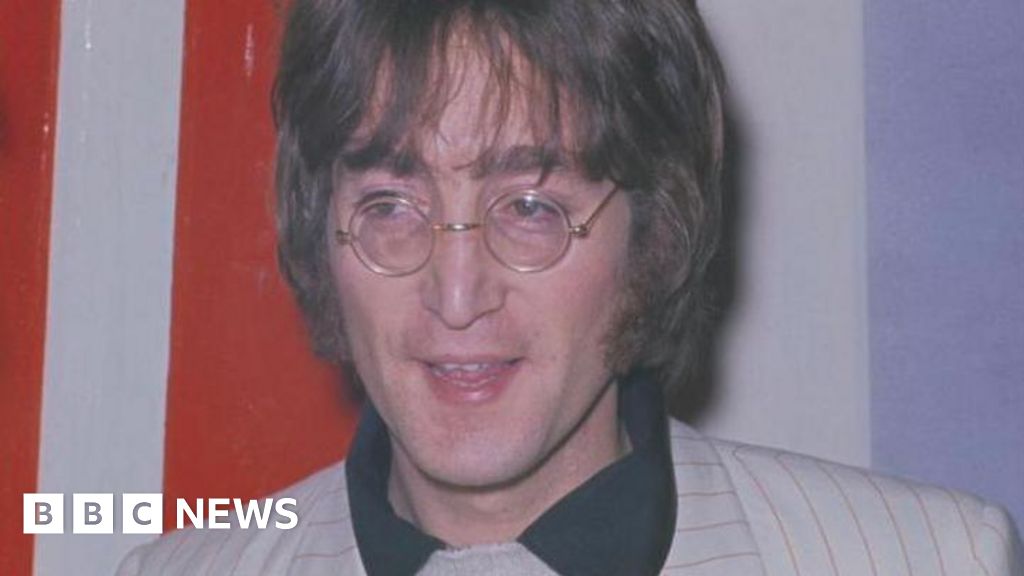
A banjo played by John Lennon is being unveiled alongside a mosaic featuring nearly 1,300 images of The Beatles star to mark what would have been his 85th birthday.
Fans are expected from around the world for the celebrations at Strawberry Field…

Liver cirrhosis represents a progressive, systemic disorder arising from chronic liver injury, marked by diffuse hepatic fibrosis, pseudolobule formation, and aberrant vascular proliferation.1 Approximately 85% of individuals with…

Childhood-onset systemic lupus erythematous (cSLE) is a life-long autoimmune disorder characterized by higher disease severity and multisystem involvement as compared to adult-onset disease.1 This is commonly due to the higher…
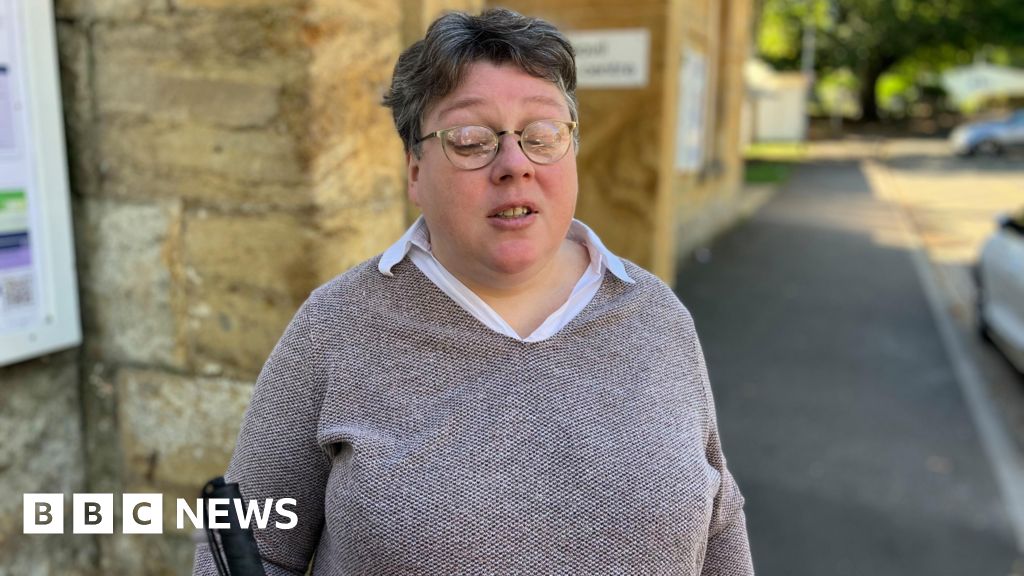
Ruth BradleyPolitics reporter, BBC Somerset, Yeovil
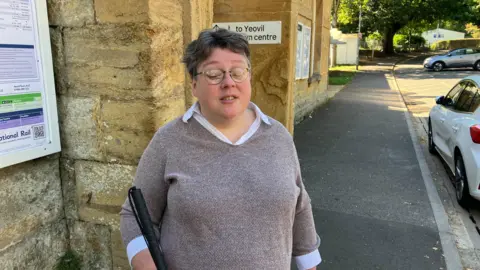 BBC
BBCA severely visually-impaired woman said she crossed railway tracks alone to catch a train, after station staff she had booked to help her did not turn up.
Kath Vickery has now started a petition to improve assistance arrangements after feeling “too anxious” to use her local station – Yeovil Pen Mill in Somerset – following the “really scary experience”.
Great Western Railway (GWR) apologised and said it was exploring how to “deliver more robust staffing”.
Figures show 10 out of 62 stations (16%) across the West of England have either no step-free access or issues with at least one platform. The Department for Transport said improving accessibility is “at the centre” of its decision-making.
Ms Vickery uses a cane and needs assistance when navigating railway stations. She said the incident happened in August 2024 – although she only started her petition recently after other more minor incidents.
Yeovil Pen Mill has a stepped footbridge to get to one of its platforms, but staff are able to help people across the tracks using a private level crossing reached by a ramp, if needed.
“When I got there I was a bit stuck because the ticket office was shut and that’s usually where I find staff,” she said.
“I didn’t feel comfortable going across the bridge on my own. I walked down to the track crossing in the hope someone would help.
“I rang the passenger assist call centre, I had a 13-minute conversation with them – they accidentally cut me off transferring me to someone – in the end I managed to attract the attention of someone at the station who told me I could cross, so then I had to run across the track crossing and up the platform to get my train.
“It was a really scary experience for me and obviously not great for safety, and still really affects me now.”
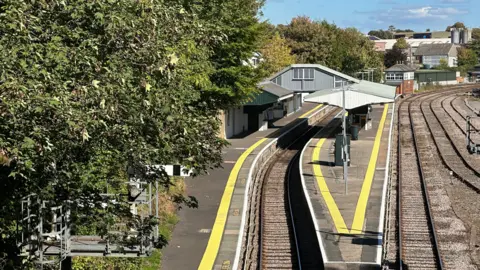
Passenger assistance can be booked in advance for rail journeys – by phone, online or using an app – and is confirmed with the passenger
When assistance has been booked, if staff are then unable to fulfil that, the passenger is meant to be informed and GWR said it offers alternatives including a free taxi to the nearest accessible station.
Staff are meant to be available at Yeovil Pen Mill from 07:20 to 18:25 on weekdays, other than a lunch break, with shorter hours at weekends.
Ms Vickery used to use the station every week or two to get to medical appointments and ad hoc self-employed work in Bristol and Weymouth.
She said she has recently had to turn down work in Weymouth as she felt unable to rely on the assistance she would receive at Yeovil Pen Mill.
Ms Vickery said losing the option of using the railway station long-term would be a “disaster” for her, with the only alternative to Bristol being a three-hour bus journey.
“It’s not like I’ve got the choice between driving and catching a train – the choices I have are very, very limited and that’s why making sure the station is staffed its scheduled hours is so very important to me,” she said.
She said she had two cancellations of assistance in the last year in addition to the experience in August 2024 when she was not informed the station would be unstaffed.
“I think it’s really important that disabled people have equal opportunity to use services and that includes train stations – and in order to use the train station I need there to be staff there,” Ms Vickery said.
A spokesperson for GWR said: “We recognise that staffing gaps during holiday periods have impacted advertised opening hours at Yeovil Pen Mill, and we apologise for any inconvenience this causes passengers like Kath who rely on staff assistance.
“While our dedicated team works hard to maintain coverage, we know that we need to increase the staff relief pool to consistently staff all stations during peak leave periods, and we’re exploring opportunities to deliver more robust staffing.”
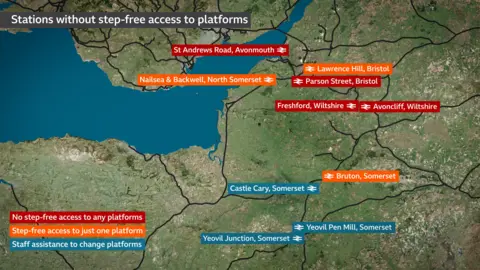
According to the disabled-led campaign group Transport for All a quarter (25%) of UK train stations have step-free access with 11% of stations staffed at all times.
Of Somerset’s 10 national rail stations, four (40%) do not have step-free access to all platforms, which can be used independently of station staff, according to information listed on the National Rail website.
For example, Castle Cary station, on the Paddington mainline, has a stepped footbridge to the westbound platform meaning passengers need staff available to help them across the tracks.
Across the West of England, 10 out of 62 stations (16%) have either no step-free access, like Avoncliff and Freshford in Wiltshire, or issues with at least one platform.
Nailsea and Backwell station, which has steps to one platform and a very steep slope to the other, was due to have had ramps installed at both platforms more than 10 years ago but £1m funding was withdrawn in 2014 after a deadline to start the work was missed.
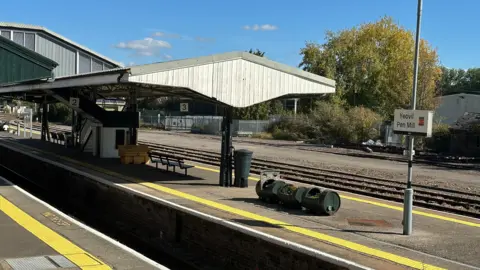
A spokesperson for the Department for Transport said it was “taking action to make rail travel easier and more reliable for disabled passengers”.
They added this included investing more than £10m to upgrade the Passenger Assist scheme, publishing a rail accessibility roadmap and improving information about the facilities available to provide support to passengers at stations.
Image used for representation
| Photo Credit: The Hindu
Actor Priyanshu alias Babu Ravi Singh Chhetri, who became famous for his onscreen…
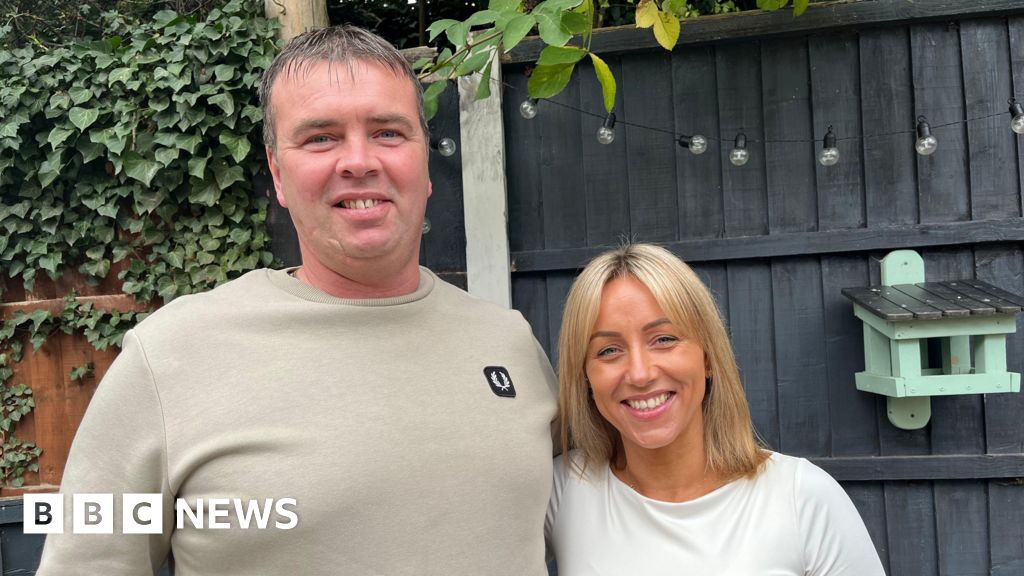
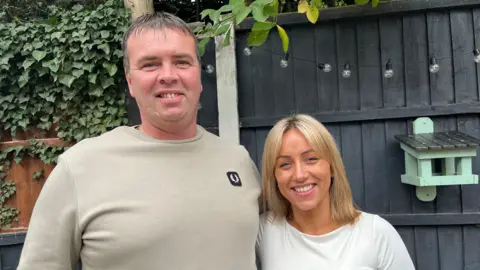 ELLEN KNIGHT/BBC
ELLEN KNIGHT/BBCA man who was diagnosed with early-onset dementia at the age of 42 has raised more than…
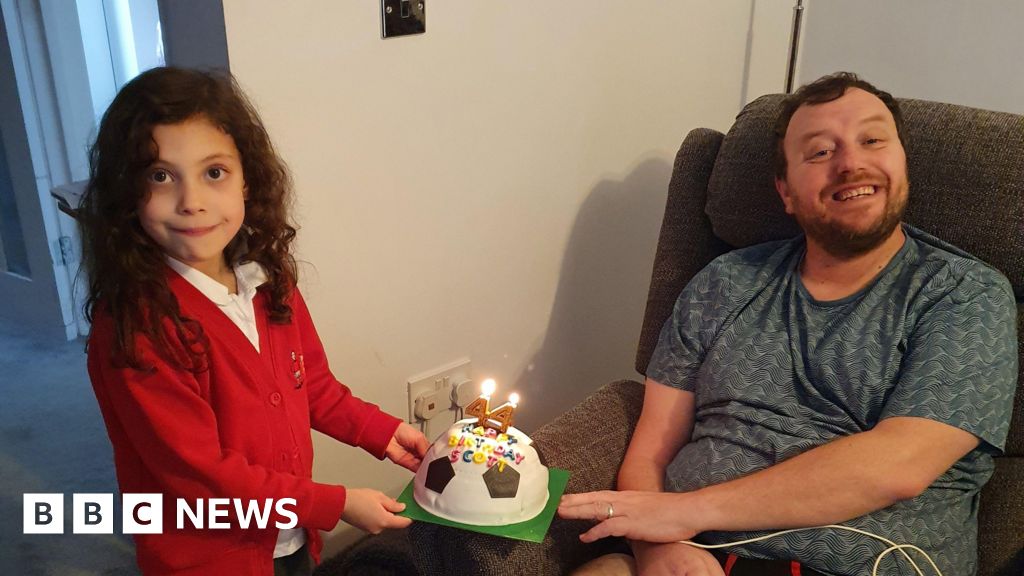
Felicity Kvesicin Bromsgrove
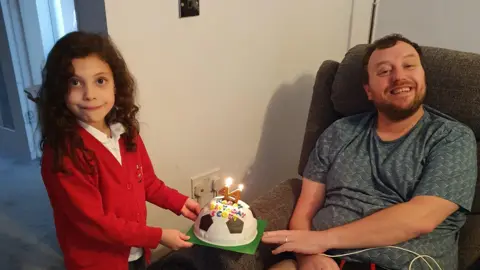 Natalie Morris
Natalie MorrisThe family of a rugby player who died 18 months after he was diagnosed with motor neurone disease (MND) have said the…